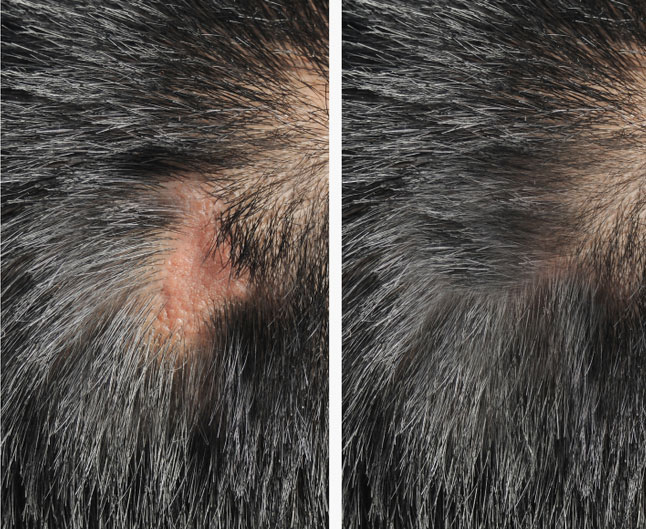One aspect of hair transplants that needs to be considered is that there is a strong possibility that scarring will occur. For individuals who have undergone hair transplants, it is counterproductive and discouraging to their esteem to have this noticeable scar tissue. The good news is that these scars can be easily hidden through a process called scalp micropigmentation, which camouflages the damaged tissue.. Learn more about these services, below!

Scalp Micropigmentation
Scalp micropigmentation is a procedure where a trained technician will add pigment into a person’s scalp, similar to the way a tattoo artist would. The pigment that is added to the scalp is carefully picked to match the natural hair color of the patient, but a little darker, in order to blend with the shadows. Every client’s hair is completely unique, so we take special care to pick a pigment that matches their look, perfectly. This is a highly precise procedure that is carried out with computerized systems, in order to guarantee quality results.

Scarring from Hair Transplants
Hair transplant patients are generally left with a long, horizontal scar that is easily noticeable around the back of the scalp. This scar tissue is often devoid of hair follicles, and is a light color. Scalp micropigmentation allows us to carefully only pigment the scar tissue. The result is a seamless look that completely hides the scar.
Post-Procedure Expectations
After undergoing scalp pigmentation, patients can expect redness and soreness on the parts of the skin where the procedure took place. Depending on the intensity of the procedure and the patient’s skin, this redness could last between 30 minutes to a full 8 hours.
If you have any questions about our scar camouflage services, or would like to know how scalp micropigmentation can be used in other ways to help with hair loss, then please don’t hesitate to give Barr Aesthetics a call today! Our team is friendly, experienced, and knowledgeable enough to give you an informed answer to your question.
